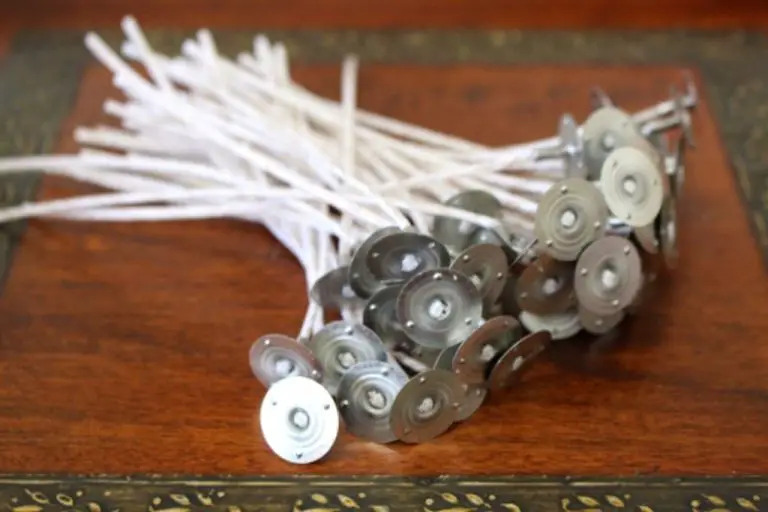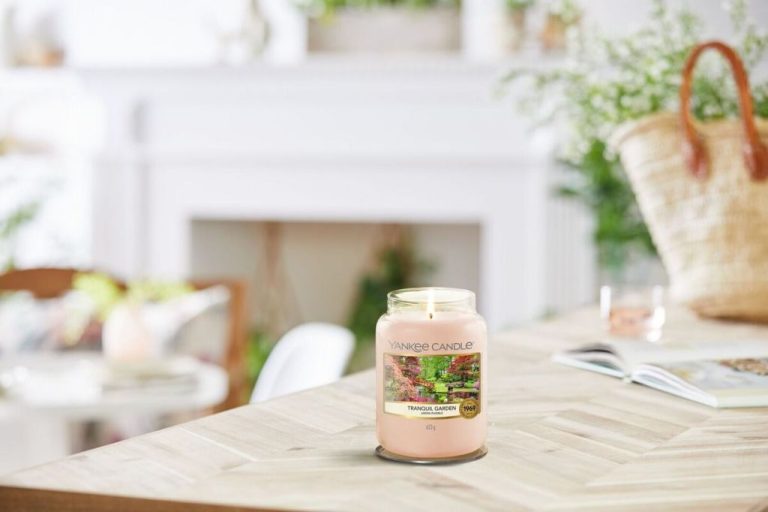Do Candles Ever Go Out?
Candles have been used for light and ambience for thousands of years, dating all the way back to ancient China around 200 B.C. Over time, candles evolved from being primarily functional for lighting to also serving decorative and aromatherapeutic purposes. Walking into a room filled with flickering candlelight immediately creates a warm, cozy atmosphere. The dancing flames have an enchanting, soothing effect that delights the senses. From birthday cakes to religious ceremonies, candles continue to be an integral part of celebrations and rituals around the world. Their bright flames symbolize hope, connection, and new beginnings.
How Candles Work
Candles produce light through the process of combustion, which is a chemical reaction between a fuel source and an oxidizer like oxygen in the air. The wax in a candle acts as the fuel source while the wick serves as a regulator for the burning process. As the candle burns, the wax at the top of the candle is drawn up the wick via capillary action. The heat of the flame then melts the wax into a liquid state so it can vaporize. These wax vapors are then consumed by the flame through the combustion reaction with oxygen. This produces energy in the form of heat and light. The wax vapors must be hot enough reach their ignition point for combustion to occur. The wick helps regulate the burning by controlling the size of the flame. It only allows melted wax to vaporize at a rate that can be steadily consumed by the flame. This allows the candle’s flame to remain stable over time as it burns through the wax fuel source.
Factors That Extinguish Candles
There are a few key factors that can cause a candle’s flame to go out before the candle has fully melted and used up its wax supply:
Oxygen Supply
A steady supply of oxygen is critical to keeping a candle lit. If the oxygen level drops too low, such as in an enclosed space, the flame will be extinguished. This is why candles in rooms with poor ventilation tend to go out more readily.
Flame Temperature
The flame needs to remain at a high enough temperature to keep vaporizing the wax to continue fueling the flame. If the temperature drops too low, the flame can no longer vaporize the wax and sustain itself.
Wick Issues
Problems with the wick, such as an improperly sized wick, can cause the flame to go out. If the wick is too thin for the type of wax, it won’t draw enough fuel up to keep the flame burning. Soot buildup on the wick can also extinguish the flame.
Common Reasons Candles Go Out
There are a few common reasons why candles may go out before fully burning all the wax:
Drafts – Open windows, ceiling fans, or AC vents that create air currents in a room can blow out a candle flame. The moving air disrupts the oxygen supply to the flame, extinguishing it. To prevent drafts from blowing out candles, make sure not to place them directly in front of fans or vents. Shield candles from drafts by placing them in enclosed containers or glass hurricane lamps.
Insufficient oxygen – Candles need oxygen to keep burning. If placed in too small of an enclosed space, a candle can use up the available oxygen and go out. Make sure to leave some openings for airflow if placing a candle inside glass containers or hurricane lamps.
Poor quality wicks – Low quality wicks that are too thin or improperly constructed can interrupt the capillary action that brings melted wax to the flame. This disrupts the fuel supply and causes the flame to go out. Use good quality cotton or paper wicks that have been properly braided to avoid an insufficient fuel supply.
Tips to Prevent Candles From Going Out
Here are some helpful tips to keep your candles burning bright and prevent them from going out prematurely:
Trim the wick – Before lighting, use scissors or nail clippers to trim the wick to 1⁄4 inch. This will help the candle burn slower and prevent the wick from mushrooming over into the melted wax.
Avoid drafts – Don’t place candles near vents, open windows or doors. Air currents and drafts can blow out the flame. Position candles away from moving air.
Use a candle holder – Candles burned directly on surfaces can tunnel or form uneven melted wax pools which leads to uneven burning and a higher chance of the flame going out. Always put candles in holders to protect surfaces and provide stability.
Do Scented Candles Go Out Faster?
Many people wonder if adding fragrance to candles impacts how long they burn. The answer is – it depends. There are a few factors that determine burn time:
Wax Type
The wax used in a candle affects how quickly it melts and vaporizes. Common waxes like paraffin, soy, and beeswax have different melt points, which impacts burn time.
Wick Size
Larger wicks tend to burn faster, while smaller wicks burn slower. Wick size must be paired properly to the wax and vessel.
Vessel Size
Larger candles with more wax will naturally burn longer than smaller vessels with less wax.
Scent Load
The amount of fragrance oil added to wax can potentially impact burn time. Heavily scented candles may burn faster as the fragrance interacts with the wax. But if the scent load is moderate, there may be negligible difference compared to unscented.
So in summary – while scent can potentially influence burn time, other factors like wax, wick, and vessel size play a larger role. Properly balancing these elements can help maintain desired burn times, whether a candle is scented or unscented.
Safety Tips
Candles can pose fire hazards if not used properly. Here are some tips to keep in mind for candle safety:
- Trim wicks to 1⁄4 inch before lighting to prevent excessively high flames.
- Never leave a lit candle unattended. Always blow out candles before leaving a room.
- Keep candles away from flammable items like curtains, books, paper, etc. Leave at least 12 inches of clearance.
- Avoid positioning candles near drafts which can cause rapid, uneven burning.
- Place candles in sturdy, fire-resistant holders that are big enough to collect dripping wax.
- Keep out of reach of children and pets.
- Do not burn a candle all the way down as the wick may fall into the wax pool and cause a fire hazard.
- Always have a way to extinguish the flames nearby like a candle snuffer or wet fingers.
- Never use candles on or near anything flammable including trees, decorations, curtains, etc.
Following basic precautions will allow you to enjoy candles safely.
Fun Facts
Candles have a rich and interesting history! Here are some fun facts about candles:
-
Candles were invented over 5,000 years ago and were originally made from whale fat.
-
Beeswax candles were invented around 3,000 years ago in Egypt.
-
In the Middle Ages, candle making was considered a prestigious occupation. Chandlers belonged to powerful guilds and supplied candles for kings and queens.
-
Candles were once used to tell time. Special candle clocks were marked with time intervals so people could tell time by how far down the candle had burned.
-
Colonial women started the tradition of draping candles in greenery during December holidays. This was the origin of the Christmas candle wreath.
-
The world’s largest candle was over 72 feet tall and weighed over 11,000 pounds! It was created by a company in India.
-
The average candle burns for around 6-8 hours.
-
Birthday candles started in ancient Greece, where candles were placed on birthday cakes as a way to honor the moon goddess Artemis.
As you can see, candles have a rich history and there are many fascinating facts and trivia about them throughout the ages!
History of Candles
The history of candles dates back thousands of years. They were originally developed out of necessity to produce light. Early candle-making materials included animal fat, beeswax and plant wicks. Some of the earliest candles may have been created in Egypt around 3,000 BC. The Egyptians soaked papyrus in melted beeswax to form a “candle-like” material they could light. The Chinese and Japanese also developed early candlemaking techniques. They extracted wax from insects and seeds to make candles.
In Europe, early candles were primarily made of tallow, which is rendered animal fat. Whale fat was also commonly used for candles in some seaside early European communities. By the Middle Ages, candlemaking had become an established craft with guild regulations. Candles were mainly made from animal fats and beeswax. Plant wicks were braided to help keep them upright as the candle burned. The 19th century brought new innovations including paraffin wax from petroleum, which was a cheaper alternative that allowed candlemaking to scale as an industry. Candle manufacturing methods and materials continued improving throughout the 1900s. Today, candle popularity remains high, although they are largely used for decoration, aromatherapy and ambiance rather than practical lighting.
Conclusion
In summary, candles will eventually go out once all the wax has melted and the wick is consumed, but there are many factors that cause candles to go out prematurely. The most common reasons are that the wick is drowned, the wax pool gets too hot, drafts blow it out, or oils in scented candles clog the wick. With proper care like trimming the wick, using a candle holder, and avoiding drafts, you can maximize burn time. But no candle will burn indefinitely. The finite amount of wax limits their lifespan. Throughout history, candlemaking has evolved to increase burn efficiency. And today, with safer materials and designs, we can enjoy candlelight without constant vigilance. But their ephemeral nature is part of their charm. A candle’s lovely glow represents the passage of time and fleeting moments to savor.
Final thoughts – candles provide atmospheric light that we’ve enjoyed for centuries. With care and awareness, we can burn them safely while appreciating their warm ambiance. But their transient flame reminds us to appreciate each moment before it slips away into memory.


